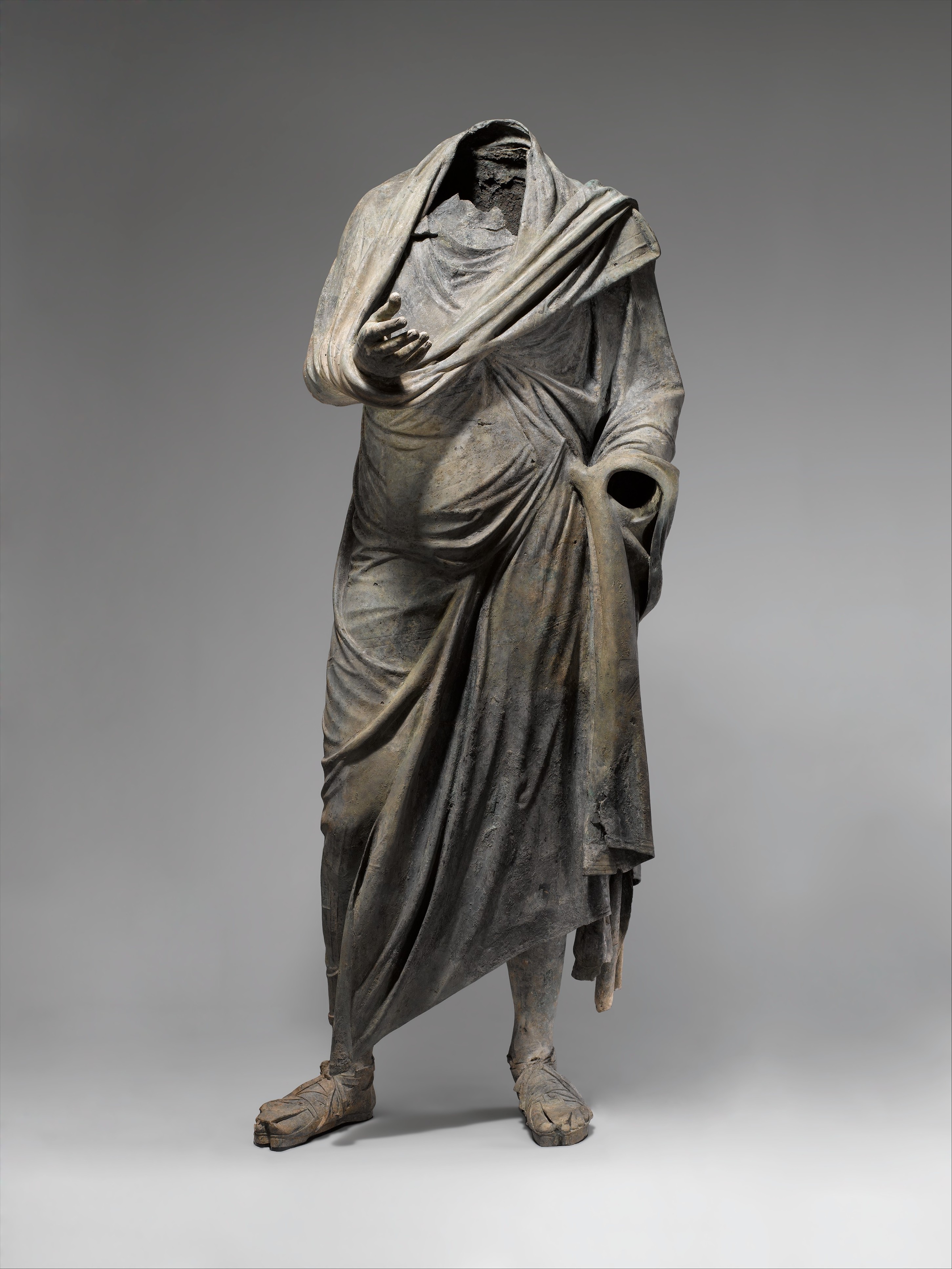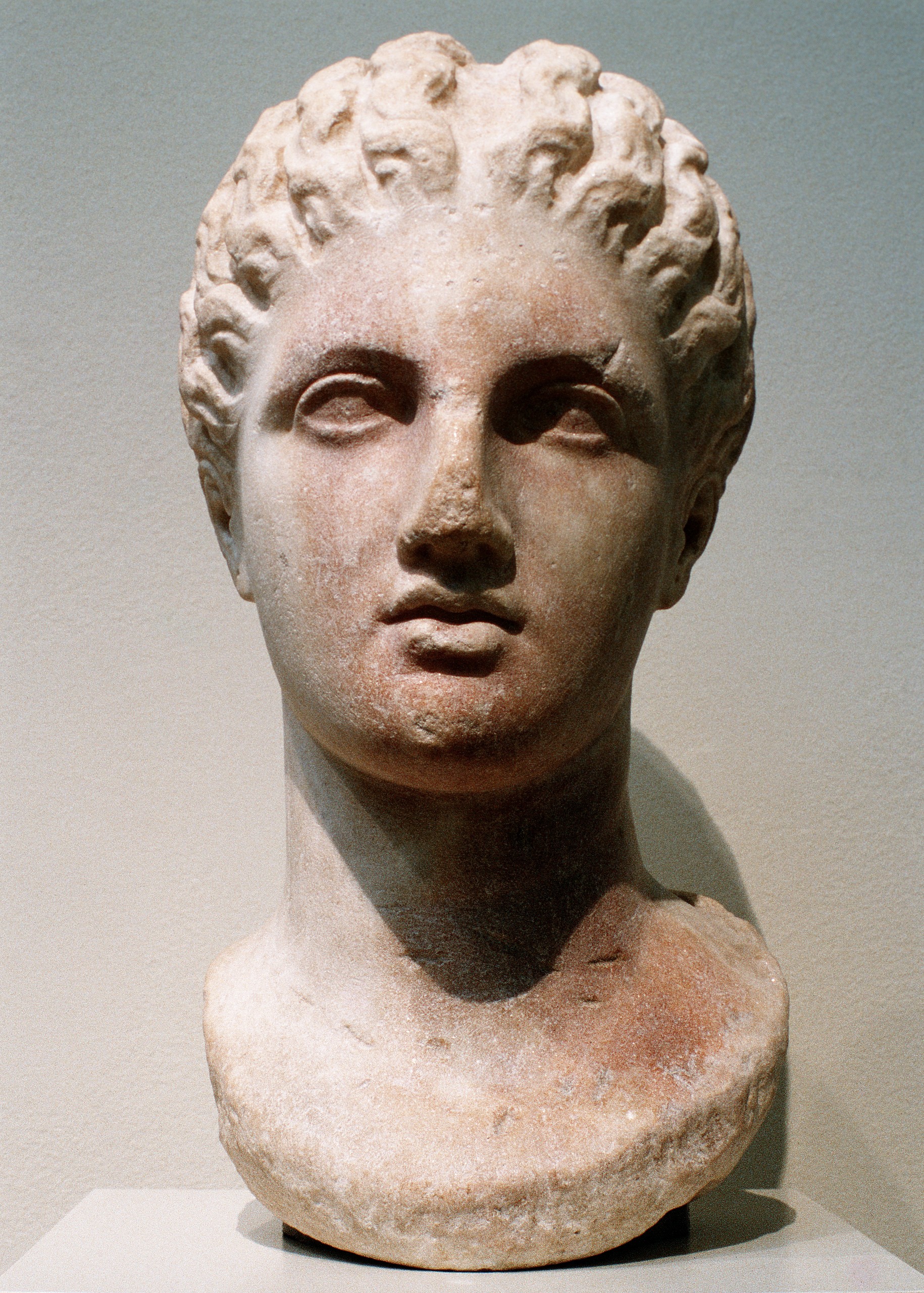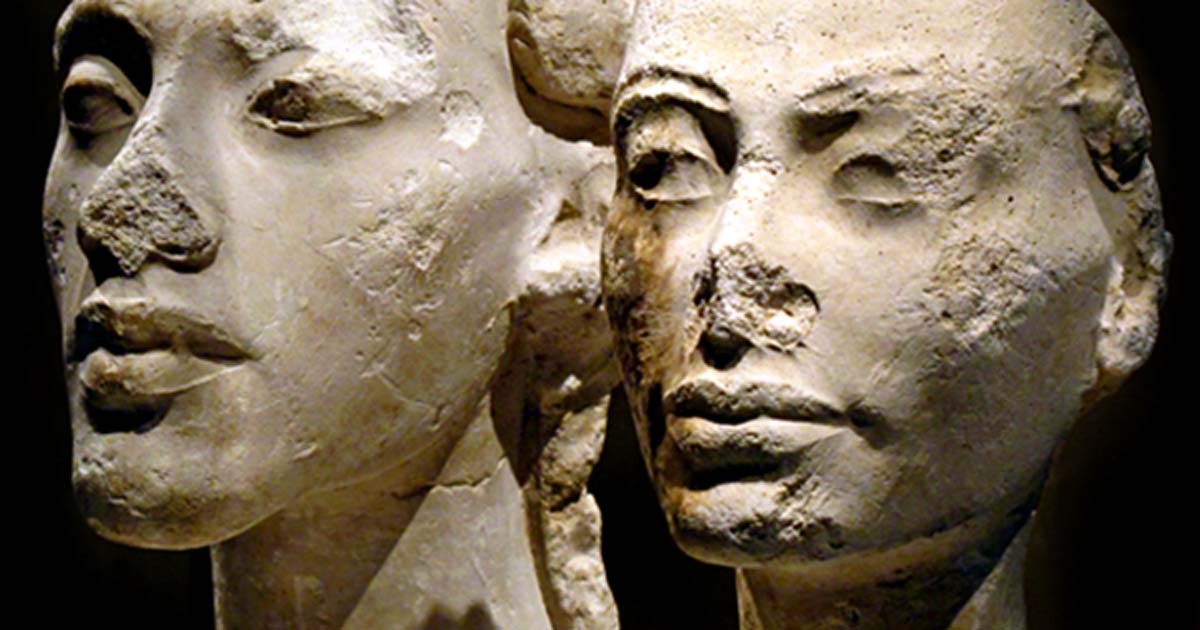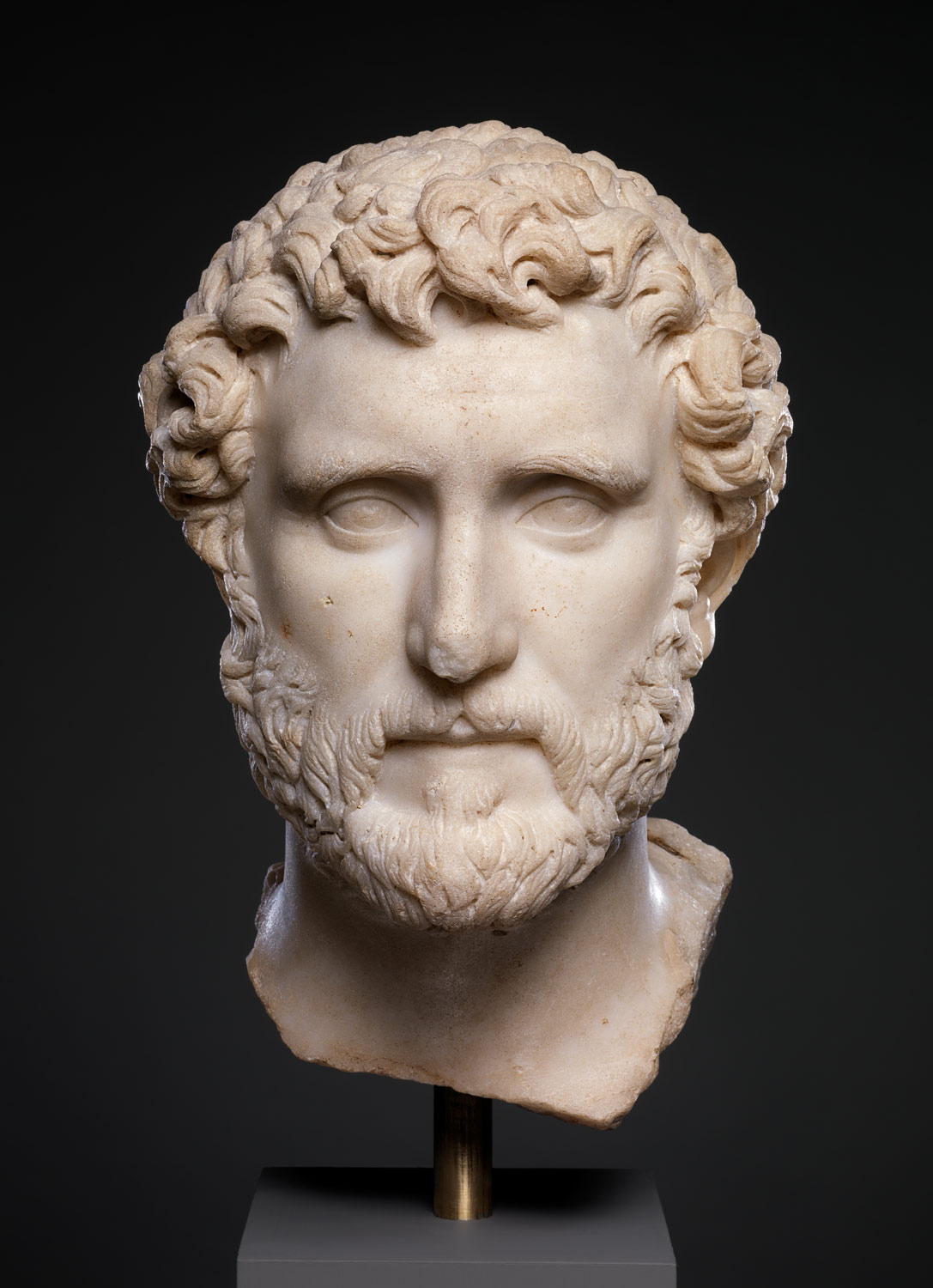Statue of Aphrodite signed by Menophantos (closeup). Rome, Roman National Museum, Palazzo

SúborVenus de Milo Louvre Ma399 n6.jpg Wikipédia
The Venus de Milo (/ d ə ˈ m aɪ l oʊ, d ə ˈ m iː l oʊ / də MY-loh, də MEE-loh; Ancient Greek: Ἀφροδίτη τῆς Μήλου, romanized: Aphrodítē tēs Mḗlou) or Aphrodite of Melos is an ancient Greek marble sculpture that was created during the Hellenistic period. It was rediscovered in 1820 on the island of Milos, Greece, and has been displayed at the Louvre Museum since.

Why do so many Egyptian statues have broken noses? CNN Style
Wikipedia Commons You must have seen this ancient Greek statue, Aphrodite of Melos or, more commonly, Venus de Milo, on the Internet. The famous statue has no arms. But once, Venus de Milo did have arms, that broke off at some point, as arms, noses, and legs often tend to do.

A ROMAN MARBLE PORTRAIT BUST OF A MAN, TRAJANIC, EARLY 2ND CENTURY A.D. Ancient Sculpture and
Consequently, possessing a well-formed and harmonious Greek nose was considered an indication of a person's noble spirit and intellect. The Influence on Classical Sculpture and Art. The beauty of the Greek nose has left an indelible mark on classical sculpture and art.

Bronze statue of a man Greek Hellenistic The Metropolitan Museum of Art
Author: Spencer Alexander McDaniel The statues we see in museums today are almost always beaten, battered, and damaged by time, exposure to the elements and Vandalism. Parts of sculptures that stick out, such as noses, arms, legs, and other appendages are almost always the first parts to break off.

Marble head of a goddess Greek Late Classical The Metropolitan Museum of Art
June 12, 2023 For many years, a Danish museum argued that its ancient head of the Roman emperor Septimius Severus belonged to a bronze torso at the Metropolitan Museum of Art in New York. This sort.

Greek Statue Nose Imágenes De Stock & Greek Statue Nose Fotos De Stock Alamy
A typical example of a Greek nose, according to a source, is neither Ancient Greek nor Roman, but rather the nose of what may be the best-known Renaissance sculpture, Michelangelo's David. Ironically, when the statue was unveiled in 1504, David's nose was considered to be too big.

8 Reasons To Love Your Big Nose HelloGiggles
Killing a Statue - Removing the Nose. The Egyptian concept of life and death is very complicated and therefore there are several interpretations of the Ba, Ka and Akh aspects. It is a fact that the Ka statues are the so-called doubles or shadows of the deceased and that the Ka forms an important internal part of these statues and murals.

Greek fury at Germany after €86bn EU bailout deal confirms years of austerity Daily Mail Online
The nose is probably one of the most distinctive characteristics of Greeks, although they do not seem to appreciate it very much: the most popular cosmetic alteration among Greeks is rhinoplasty, the nose job, a word that is also Greek - rhina meaning nose, and plasty meaning shaping.

Ancient Greek Sculptures That Everybody Should Know
A puzzling question If you have ever visited a museum, you have probably seen ancient sculptures such as this one, a Greek marble head currently held in the Glyptothek in Munich that has been identified as "probably" a copy of a fictional portrait of the Greek poetess Sappho, with a missing nose:

Why No Nose? The Ancient Breath of Life and Remarkably Powerful ‘Living Statues’ Ancient Origins
The Greek nose is a nose shape that draws inspiration from ancient Greek sculptures and is often associated with a sense of aesthetic perfection and harmony. It is characterized by a straight and narrow bridge, leading to a well-defined and balanced tip. The defining feature of the Greek nose is its straight bridge.

Why Were Noses on Ancient Greek Statues Removed?
A nasothek (from the Latin nasus "nose" and Greek θήκη "container") is a collection of sculpted noses. Carlsberg display of restoration noses The Ny Carlsberg Glyptotek museum in Copenhagen has a nasothek collection that displays restored noses that were removed from portrait busts and statues after changes in the museum's art restoration policies.

Statue of Aphrodite signed by Menophantos (closeup). Rome, Roman National Museum, Palazzo
In the Odyssey, one of Penelope's suitors (dead or alive, it is not clear) is dragged outside the palace and his nose and ears are cut off, followed by his genitals, hands and feet; Heracles earned the nickname 'Nose Docker' on the grounds that he cut off the noses of heralds who told him what he didn't want to hear; and nose mutilation was a pu.

Why are Noses Missing from so Many Egyptian Statues? Ancient Origins
A roman nose is a unique nose type with a high and prominent bridge that looks like the nose is curved or bent slightly. It has a ridge that is obvious and high-raised but ends in a slightly hooked shape. The bridge of the nose prominently sticks out from the face. It has a curvature that slopes downward. It is also known as the aquiline nose.

A GREEK MARBLE HEAD OF A YOUTH, CIRCA MID 4TH CENTURY B.C. Ancient Sculpture and Works of Art
An aquiline nose (also called a Roman nose) is a human nose with a prominent bridge, giving it the appearance of being curved or slightly bent. The word aquiline comes from the Latin word aquilinus ("eagle-like"), an allusion to the curved beak of an eagle.

Marble portrait of the emperor Antoninus Pius Work of Art Heilbrunn Timeline of Art History
Kleobis and Biton Delphi Archaeological Museum, Greece Now in the Delphi Archaeological Museum, Greece Found at Delphi, the navel of the world and the home to the Greek oracle, Pythia, in 1893 and 1894. Kleobis and Biton, two larger than life (naked, except for boots), identical statues, made from Parian (Paros) marble.

Greek statues Italic Roots
March 9, 2022 General Advertisements Views: 58 Many people have pondered this issue: "Who destroyed the noses of many ancient statues?". Ancient sculptures like this poetess Sappho of Smyrna (Izmir, Turkey), which is now in the Istanbul Archaeology Museum with a broken nose, are very common. Advertisements Marble head of the poetess Sappho; Flickr.